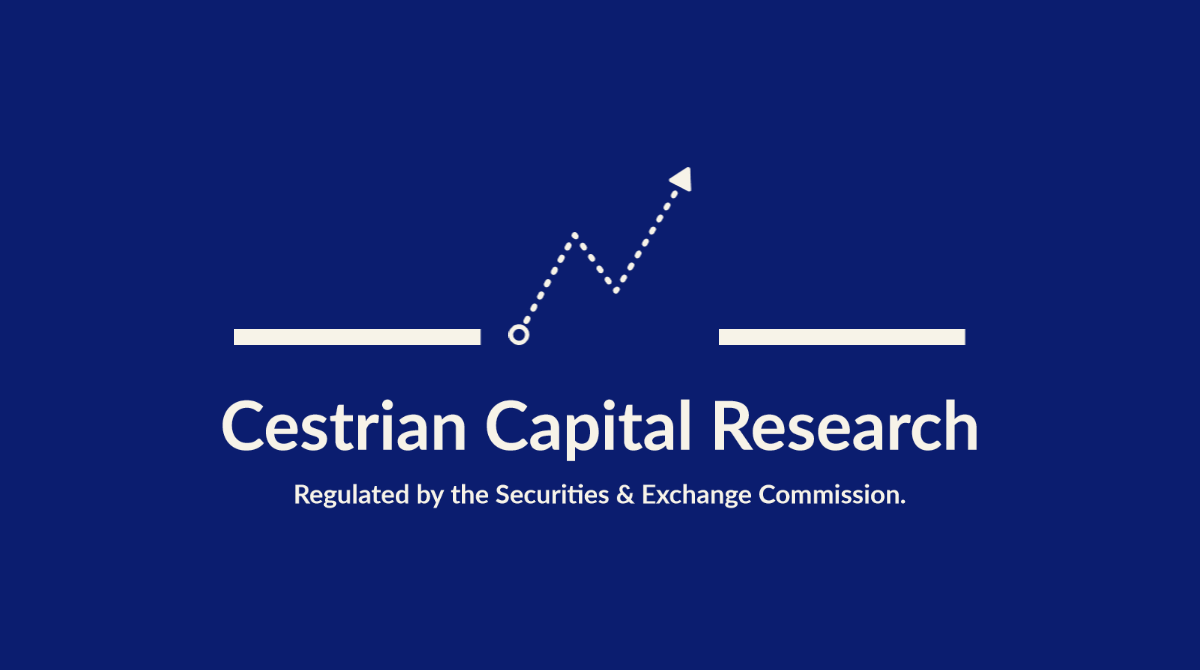SGOV: Your Guide to 0-3 Month Treasury ETF (No Paywall)

Lets Talk About Treasury ETFs
Today we are going to talk about SGOV - iShares 0-3 Month Treasury Bond ETF. This is the first note in a series on the US Treasury ETFs, across the whole spectrum of maturities.
Yimin Xu, July 22, 2024
DISCLAIMER: This note is intended for US recipients only and, in particular, is not directed at, nor intended to be relied upon by any UK recipients. Any information or analysis in this note is not an offer to sell or the solicitation of an offer to buy any securities. Nothing in this note is intended to be investment advice and nor should it be relied upon to make investment decisions. Cestrian Capital Research, Inc., its employees, agents or affiliates, including the author of this note, or related persons, may have a position in any stocks, security, or financial instrument referenced in this note. Any opinions, analyses, or probabilities expressed in this note are those of the author as of the note's date of publication and are subject to change without notice. Companies referenced in this note or their employees or affiliates may be customers of Cestrian Capital Research, Inc. Cestrian Capital Research, Inc. values both its independence and transparency and does not believe that this presents a material potential conflict of interest or impacts the content of its research or publications.
Before we begin, I have an exciting news to share:
I have launched my private channel at Cestrian to provide trade ideas in 3 key areas:
- Income Producing Instruments – including US Treasury ETFs, fixed income funds and Business Development Companies (BDCs)
- Equities – including mega-cap tech, financials (banks, asset managers, exchanges, payments companies)
- Crypto – selected crypto stocks and the underlying coins.
Today’s article is a good example of the depth and breadth we get into for each instrument. You can claim your 7-day free all-access via my Launch Pass page now!

Where SGOV is located on the yield curve
SGOV is a Treasury ETF run by BlackRock Fund Advisors that targets the shortest end of the yield curve, in the 0 to 3 months maturity region.

In this series, we will cover all of the maturities from SGOV to GOVZ.
1. SGOV tracks the ICE 0-3 Month US Treasury Securities Index
SGOV is a passive but imperfect index tracker.
The index SGOV tracks is the ICE 0-3 Month US Treasury Securities Index, which measures the performance of coupon-paying Treasuries with maturities of less or equal to 3 months.
SGOV does not attempt to replicate all of the underlying securities of the index, but employs a “representative sampling” strategy. This means the fund managers picks instruments that collectively reflect the investment profile of the index. However, these instruments may differ from the actual index. There are likely fewer holdings in the ETF compared with the index.

You can see that historically, SGOV has outperformed the index by 2% over the past 2 years.
Note that this is not an active strategy, as the fund managers do not try to defend the fund performance in a market downturn.
The fund’s total annual fee is 0.09%. With the current AUM of $24b, SGOV makes £21m in management fees without doing much. Not bad at all.
2. A detailed view of SGOV’s holdings
SGOV’s top 5 holdings make up nearly 70% of the total value.

The weighted average Yield To Maturity is currently 5.34%. The Effective Fed Funds Rate (EFFR) is 5.33%. The 10-Year Treasury yield is 4.27% (as of July 22, 2024).

The weighted-average Days Until Maturity is 34 days, i.e. just over 1 month.

Finally, below is a comparison of the dividend yield (currently 5.20%, the blue area) versus the Effective Fed Funds Rate, 1-Month Treasury yield, and 3-Month Treasury yield since 2022.
The dividend yield covers all of the past 12 months’ dividends, including before the Fed hiked interest rates. This is why there’s a gap in the graph.

SGOV is essentially a very effective way of accessing a high risk-free return for the investor’s cash holdings.
But given the bonds mature very quickly, investors can only lock in the yield for a very short period of time. When the Fed starts cutting rates, investors will receive smaller dividends, without much benefit from price appreciation.
3. SGOV distributes monthly
The first thing you may notice looking at SGOV’s price chart is its shooting-star-like monthly pattern.

SGOV’s price starts the month ex-dividend. It accrues interests from the underlying Treasury bills during the month, contributing to a daily incremental price increase. By the month-end, the ETF price reflects the total interest accrued for the entire month.
The fund distributes dividend at the beginning of the month. The ex-date is the first working day of the month, payable 4 working days later. The only exception is January, when the fund pays out dividend in mid-December instead (meaning 2 payouts in December).
All else equal, the ETF price drops by the amount of the dividend paid, which appears as a sudden decrease on the chart.
4. SGOV price spends most days at a small premium to NAV
SGOV’s Net Asset Value (NAV) reflects the current market value of its holdings. If the underlying Treasury bills are in high demand, their prices can increase, raising the NAV of the ETF.

Because SGOV is an exchange-traded-fund (“ETF”), individual shares bought and sold in the secondary market can deviate from the NAV value.
The chart above shows that on most days, SGOV trades at a small premium to its NAV - usually between 1 and 5 basis points. Since May, the premium has shrunk towards par.
5. SGOV AUM & Fund Flows
Interestingly, the Fund was launched in May 2020, when the short-term Treasuries were effectively yielding 0% - ok, 3 or 4 basis points if you had to be precise.
But even with just 3 or 4 basis points return, SGOV attracted $750m - $900m Asset Under Management until the Fed raised interest rates. It really reflected flood of excess cash floating around in 2020.

Now, SGOV manages almost $24 billion. Investors keep putting money in to earn attractive short-term returns on cash in the latest hiking cycle. The only outflow days in 2024 were the month-ends, when investors rebalance their Treasury portfolios.
6. Things may be different after September
Given the latest Nonfarm Payrolls and CPI data, the Fed looks most likely to start its first rate cut cycle since April 2020.

The Fed Funds Futures market predict 2.5 cuts by 2024 year-end. The market feels certain about the September and December cuts, but places a 50% chance on a November cut as well.
As the rate cut cycle begins, investors may prefer to switch to longer-duration bonds. This is because the 10-year yield is still attractive for investors to lock it in, versus keeping rolling money in short-maturities. Moreover, longer-duration bonds may produce outsized returns when interest rates fall (and outsized losses when the opposite happens too).
Going forward, we monitor SGOV essentially but keeping a close eye on how the Fed approaches the upcoming FOMC meetings. Near-term FOMC decisions can affect the value of the Treasury holdings and dividends, while the longer-term outlooks can help us weigh between the short-term maturities versus the longer-end.

